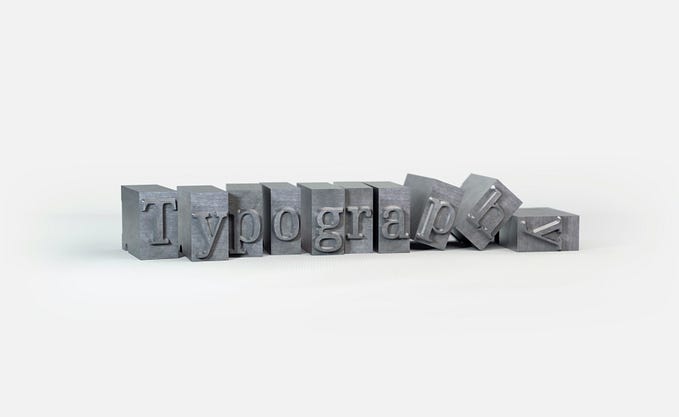15th century UX & the Korean alphabet
How King Sejeong went against the grain advocating for the user, and drove a linguistic revolution in the 15th century.
With the rise in global popularity of BTS, BLACKPINK, Parasite, Squid Game, K-dramas, K-pop, Korean skincare, and so much more, it’s hard to believe that at one point in history, Koreans themselves had a hard time expressing and sharing their creations because their writing system could not fully capture their speech, their thoughts and their feelings. One man made this his mission.

Enter Sejeong the Great
It’s 1418, and Crown Prince Yi Do has ascended to the throne at 22-years old. Born the third son of King Taejong and Queen Wongyeong, he would become the 4th monarch of the Joseon Dynasty of Korea. During his reign, Crown Prince Yi Do would become known as Sejeong the Great 세종대왕, one of the most iconic figures of Korean history.
His reign, considered the Golden Age, saw great intellectual and cultural advancement. King Sejeong, a Confucian scholar, supported cultural, economic and political research in Korea. His accomplishments include developing programs for victims of droughts and floods, sponsoring scientific inventions like the rain gauge, improving the movable metal type created in Korea centuries earlier, and enhancing the design of musical instruments.
Putting the user front-and-centre
Several years into the Joseon Dynasty, Korea has its own spoken language but is dependent on Chinese characters in writing. Made up of pictograms, Chinese characters consist of over 80,000 symbols to convey meaning. Scholars used Chinese characters for literary purposes: some characters were used for pronunciation, and others for their vernacular meaning. However, the Chinese writing system could not translate all the sounds of spoken Korean, and with the added complexity of Chinese characters, only the privileged few had the opportunity to learn it.
King Sejeong empathized with commoners, who found themselves in legal disputes, unable to read written laws. He felt a duty to help these people who could not express their feelings in writing.
Sejeong and his scholars created a phonetic writing system to address this linguistic and classist gap, a system that could both capture the sounds of spoken Korean and be easily read and adopted.
Hunminjeongeum: Correct Sounds to Enlighten the People
“I have created 28 letters because I felt compassion for the people who cannot express their thoughts.” — Sejeong the Great
The development of Hunminjeongeum 훈민정음 was completed in 1446, and printed in a book called Hunminjeongeum Haeryeon, with a preface written by King Sejeong. The book details the reasons for creating the writing system, and instructions for pronouncing each character. It was a system of 28 letters; based on 5 basic consonants and 3 basic vowels.

The five basic consonants ㄱ, ㄴ, ㅁ, ㅅ, and ㅇ were modelled after the shapes of the vocal organs: teeth, lips, tongue and throat. The basic consonantsㆍ, ㅡ, andㅣreflected the harmony of the sky (positive yang energy), the earth (negative yin energy), and humankind (neutral force), rooted in natural philosophy and cosmology values of the time.


There was backlash about the use of Hunminjeongeum from scholars and government officials, who claimed that it impeded education and government administration, both dependent on the Chinese writing system. Nevertheless, King Sejeong ordered famous poems, proverbs and religious texts to be translated. Today, The Republic of Korea boasts a high literacy rate.
The book Hunminjeongeum was added to South Korea’s list of National Treasures in 1962, and added to UNESCO’s Memory of the World Register in 1997. It is now preserved at Gangsong Art Museum in Seoul.
The Design of Hangul
As time went on, Hunminjeongeum became known as Hangul and today, 24 letters are still in use: 14 consonants and 10 vowels. Hangul is revered by linguistic scholars and linguaphiles alike for its ease of acquisition and scientific design. It is said that children and foreigners can learn Hangul with relative ease, as its most complex character consists of just five strokes.
Hangul’s design is lauded for its scientific basis in the shapes of vocal organs during speech. Furthermore, Hangul follows a systematic theory whereby additional letters can be created by adding strokes to the basic characters or by combining characters. Pronunciation cues are baked into its design.
Here is a look at how Hangul consonants expand and rough approximations of their pronunciations:

Hangul vowels follow combinations of ㅣ and ㅡ. These expansions look like ㅏ, ㅑ, ㅓ, ㅕ, ㅗ, ㅛ, ㅜ, ㅠ, ㅐ, ㅒ, ㅔ, and ㅖ. On a keyboard, vowels occupy the right keys and consonants the left, facilitating faster typing.
In comparison to English, where letters form words in a linear fashion (eg: nose), Hangul is more efficient in its syllabic blocks where vowels and consonants can be stacked (eg: 코).

Hangul is respected as one of Korea’s greatest intellectual achievements in its history. It even has its own national holiday to commemorate its invention, Hangul Day, observed on October 9 in South Korea and January 15 in North Korea annually. Likewise, the Yanbian Korean Autonomous Prefecture in China’s northeastern Jilin Province, where a large number of Koreans live, has designated September 2 as Hangul Day.
What started as one man’s quest to give the commoner a voice, has become just one of King Sejeong’s many lasting legacies that has defined the history and culture of Korea. The creation of Hangul is a major linguistic and cultural feat at the intersection of user experience, sociology, and science. It addresses a societal gap and mimics speech anatomy, putting humans at the centre of the solution and the design. Hangul’s prominence as Korea’s writing system since its inception shows the positive impact of putting users first in solving problems, a solution that worked in the 15th century that still stands today.
Sources
- [National Hangeul Museum] About Hangeul(Korean alphabet)
- Chinese Yanbian City Seeks to Designate Day of Korean Language
- Design Lessons from the Korean Alphabet
- History of Hangul
- How to Learn the Korean Alphabet and Write in Korean [Step-by-Step Guide]
- Who really invented Hangul?
- Hunminjeongeum — National Treasure No. 70
- Hunminjeongum Manuscript
- King Sejong the Great: And the Golden Age of Korea
- Korean Pronunciation Guide — 네 (NE or DE?) & 뭐 (MWO or BWO?) [TalkToMeInKorean]
- National Hangeul Museum
- Why the Korean alphabet is brilliant






![Adobe Illustrator > Adobe Firefly for Image Mockups [ Tennis! ]](https://miro.medium.com/v2/resize:fit:679/0*NuaHZ02J8DFqOLys.jpeg)




